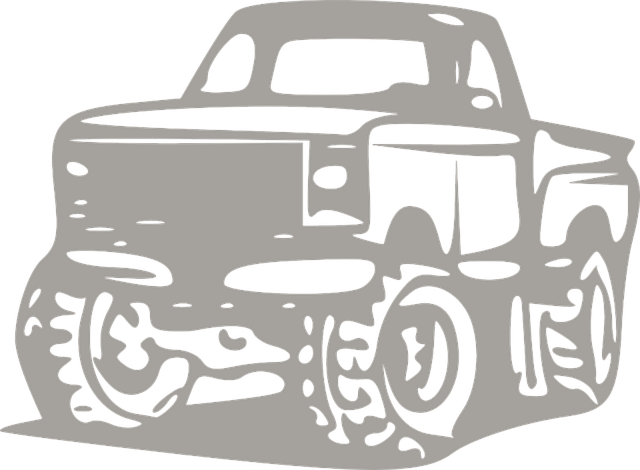Shackles, once symbols of oppression, have evolved into versatile mechanical devices integral to various industries, including 4×4-parts-Brownsville applications. Their timeless design, featuring anchor and bolt mechanisms, accommodates diverse needs through varied sizes and materials. Today, advanced materials and engineering enhance their performance and reliability in demanding environments. In Brownsville, known for its off-road culture and 4×4 parts, shackles like sturdy plastic or composite ones are favored for lightweight robustness. This city's connection to 4×4 parts symbolizes freedom, empowering individuals to challenge limitations and explore new opportunities while fostering community development.
Shackles, far from being relics of the past, are multifaceted devices with a rich history and surprising modern relevance. This article explores various aspects of these binding tools, from their primal origins to their diverse applications in today’s world. We delve into the historical perspective, uncovering how shackles have evolved over time, and examine their varied types and uses beyond metal chains. Specifically, we highlight the 4×4-parts-Brownsville connection, a unique example of shackle integration. Additionally, we address legal and ethical considerations that tie into this complex topic.
- Unveiling the Concept: What Are Shackles?
- Historical Perspective: A Journey Through Time
- Types and Uses: Beyond Metal Chains
- The 4×4-Parts-Brownsville Connection
- Breaking Free: Overcoming Shackles in Modern Times
- Legal and Ethical Aspects: A Complex Web
Unveiling the Concept: What Are Shackles?

Shackles, in their most basic form, are mechanical devices used to bind or fasten objects together. They’re versatile 4×4-parts-brownsville that have been pivotal in various industries and everyday life for centuries. From industrial applications like heavy machinery and construction to more mundane uses like securing cargo during transport, shackles offer a reliable means of connection under extreme conditions.
The design typically consists of an anchor or ring at one end and a bolt or pin at the other, allowing for quick and secure assembly. They come in different sizes, materials, and strengths to cater to diverse needs—from lightweight options for everyday use to robust, heavy-duty shackles designed to withstand extreme stress. In today’s world, with an increasing focus on innovation and safety, shackles continue to evolve, incorporating advanced materials and engineering to enhance their performance and reliability in the most demanding environments.
Historical Perspective: A Journey Through Time

Shackles have a long and varied history, reflecting societal shifts and changes over time. From ancient civilizations to modern industrial age, these metal bonds have played a significant role in constraining and controlling individuals. In the past, shackles were often used as a symbol of oppression, slavery, and power dynamics, restricting movement and serving as a physical manifestation of captivity. They have been found in various forms across different cultures, from the iron chains of medieval Europe to the more intricate designs of colonial-era 4×4-parts-Brownsville, reflecting the technological advancements and cultural influences of their times.
As societies evolved, so did the purpose and design of shackles. With advancements in metalworking, stronger and more complex shackle systems were developed for various applications, including law enforcement, military, and even industrial use. Today, while many see shackles as a relic of the past, they still hold relevance in specific contexts, such as in forensic science for evidence preservation or in controlled environments to ensure safety and security.
Types and Uses: Beyond Metal Chains

Shackles, often associated with metal chains, encompass a broader range of binding and securing mechanisms. While traditional metal shackles are prevalent in industrial and automotive settings, the term extends to various specialized forms tailored for distinct applications. For instance, in the context of 4×4 parts Brownsville, these might include sturdy plastic or composite shackles designed for rugged off-road vehicles, offering lightweight alternatives without compromising strength.
Moreover, modern materials like steel alloys with enhanced corrosion resistance and specialized coatings further expand their utility. These innovative designs cater to demanding industries such as automotive, maritime, and construction, ensuring secure connections in diverse environments. From heavy-duty metal shackles to advanced composite options, the variety satisfies specific needs, making them indispensable across multiple sectors and terrains, including 4×4 parts Brownsville applications.
The 4×4-Parts-Brownsville Connection

In the world of off-road adventures, the 4×4-parts-Brownsville connection is a significant aspect that cannot be overlooked. Brownsville, a bustling metropolis known for its vibrant culture, has also become a hub for enthusiasts seeking powerful and reliable 4×4 vehicles. The city’s strategic location and diverse terrain make it an ideal testing ground for these rugged machines. Local businesses specializing in 4×4 parts have flourished, catering to the needs of both casual adventurers and serious racers.
These 4×4 parts stores offer a wide array of high-performance components, ensuring that owners can customize their vehicles to tackle any challenge. From robust engines and enhanced suspension systems to advanced navigation tools, every part is carefully selected to withstand the rigors of off-road driving. The connection between Brownsville’s thriving 4×4 community and these specialized retailers has revolutionized the way local enthusiasts approach their outdoor adventures, fostering a culture that celebrates exploration, durability, and the unyielding spirit of the wilderness.
Breaking Free: Overcoming Shackles in Modern Times

In modern times, the concept of ‘breaking free’ from shackles takes on a unique dimension compared to historical contexts. Shackles, metaphorically speaking, can represent various forms of societal, cultural, or personal constraints that bind individuals and communities. Overcoming these shackles involves a multifaceted approach, especially in diverse urban landscapes like Brownsville, where 4×4-parts play a significant role in the pursuit of freedom.
One key aspect is education and awareness, empowering individuals to recognize and challenge oppressive structures. In the case of Brownsville, access to resources and knowledge about various 4×4 vehicles and their modifications can be transformative. These tools, when utilized responsibly, become symbols of liberation, enabling people to traverse through challenges and explore new possibilities. By breaking free from limiting beliefs and systemic barriers, individuals can forge paths that lead to personal growth, community development, and a more inclusive society.
Legal and Ethical Aspects: A Complex Web

Shackles, once symbols of restraint and oppression, have evolved into multifaceted tools with diverse applications. From their historical roots to modern-day uses in industries like 4×4-parts-Brownsville, understanding the different types and their significance is crucial. As we navigate a world where breaking free from physical and metaphorical shackles is essential for progress, it’s imperative to consider both the legal and ethical aspects that govern this ancient yet ever-relevant concept. This journey through time and context reveals the complex web surrounding shackles, underscoring their enduring impact on our present and future.
